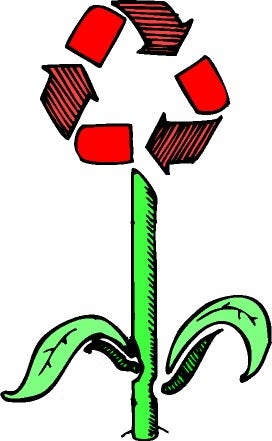Composting and Recycling
Composting and Recycling in the School Cafeteria

Our mission is to reduce the amount of landfill-bound waste generated by students at breakfast and lunchtime.
All 4th and 5th grade students at John Stanford volunteer at school lunch time. They serve food in the kitchen, wipe down tables after lunch, and monitor the recycling and food waste collection line. The recycling station monitoring duties are described below.
How our process works:
We have three main ways to dispose of lunchroom waste:
- Recycling (BLUE container)
- Food waste (RED container)
- Landfill-bound garbage (BLACK container)
We also have a colander for draining liquids, a green container for collecting cups and juice pouches for re-use, and a dark green container for collecting our new metal forks and spoons.
Blue – Recycling: The school district has a different contract for recycling pickup than what the city of Seattle offers with residential recycling pickup. What this means is that not everything that you can recycle at home can be recycled at school. We can recycle plastic and paper cups. But we can not recycle plastic clamshell-type containers, foil, or foil containers at school like you can at home. Otherwise, the recycling rules are the same.
Red – Food waste: Any food scraps, plus paper napkins, paper towels, and brown paper bags, are collected in our big red bin lined with a compostable bag. The food composting rules that we use at school are the same as those as for food and yard waste for Seattle residents. Uncoated paper plates and cups (no wax or shiny plastic coating) can also be added to the compostable bin.
Green – Reusable items: Plastic cups are separated from general recycling so we can stack them together and save space in the recycling bin. Plastic cereal bowls are sometimes saved and washed and used in art projects by teachers in LSA. We also save foil juice pouches, such as Capri Sun brand, but collect all brands and types of aluminum pouches. We use these juice pouches to make items such as purses, lunch bags, and tote bags to sell to benefit JSIS.
Black – Landfill: Everything that doesn’t fit into a category above ends up in a landfill-bound garbage dumpster. This includes ziplock plastic bags, plastic forks and spoons, foil wrappers, plastic straws, and coated paper plates.
Our food waste composting process is encouraged and supported by the Seattle Public Schools. Similar programs have been implemented in other Seattle public schools. As a reward for successfully implementing food waste collection in 2009-2010, the school district paid for all compostable bags used to line our collection containers in 2011.
Fifth grade teachers coordinate the schedules of the volunteers on the recycling and composting line. One student works during first and second lunch, and a second student works third lunch and cleans up. The volunteer monitors also make sure that bulky items, such as milk cartons, are flattened as much as possible so they take less space, as we pay for all waste services based on volume. A parent volunteer is always on-site during all three lunches and clean up.
As a result of the close attention of the recycling and composting monitors in 2009-10, we were able to reduce our garbage – per lunch period – from six large bags to less than one. This was possible because in the past, the “recycled” collections were usually so contaminated with non-recyclables that they had to be disposed of as garbage. In fact, as of October 19, 2009, our garbage dumpster service was reduced from weekly to every other week, which reduced garbage disposal expenses by 54%.
All because we have our 4th and 5th grade students monitoring what goes in those colored bins!
Staff Lounge
The JSIS staff lounge has a Red receptacle for food waste in addition to Recycling and Landfill containers.
JSIS Special Events
Expect to see the same Red, Blue, Green, and Black receptacles school-sponsored special events.
